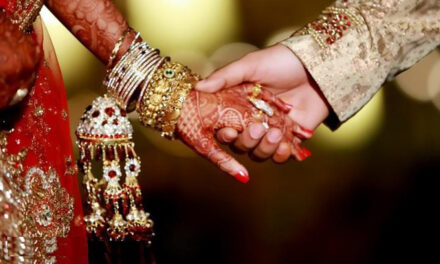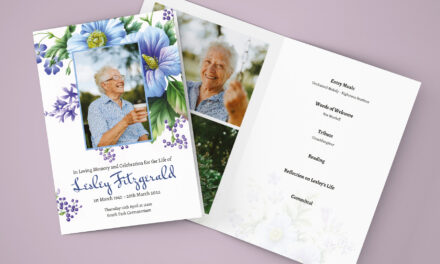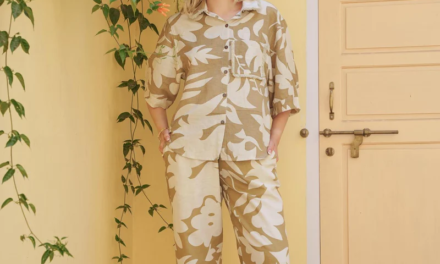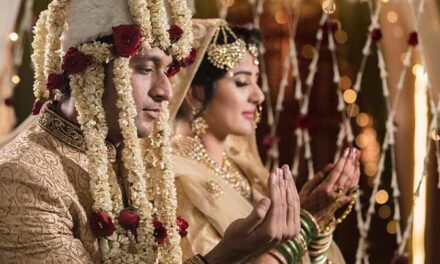The wedding fashion landscape is evolving, and modern brides are increasingly turning to sustainable bridal lehengas, a choice that marries sophistication with eco-responsibility. This shift reflects a deeper understanding of the environmental and ethical facets of bridal fashion. In this article, we will explore the concept of sustainable bridal lehengas and why they are becoming the favoured choice for contemporary brides.
The Sustainability Shift in Fashion
Sustainability is a defining theme in the fashion industry. Brides today are not merely searching for the perfect wedding attire; they are also attuned to the broader ecological and ethical implications of their choices. Sustainable bridal lehengas embody this evolving mindset, transcending the confines of aesthetics to embrace a commitment to environmental and ethical ideals.
Eco-Friendly Fabric Choices
At the core of sustainable bridal lehengas lies the selection of environmentally responsible fabrics. Sustainable bridal lehengas, such as this Mayai Lehenga from designer Anita Dongre’s collection, are made out of sustainable raw silk fabric in contrast to other lehengas made out of environmentally degrading materials. The designer has championed the cause of using eco-friendly materials in her designs, including Bemberg and Tencel, creating aesthetically pleasing bridal ensembles that tread lightly on the environment.
Artistry in Craftsmanship
The creation of a sustainable designer wedding lehenga is intrinsically linked with traditional artisanal craftsmanship. These garments are meticulously handcrafted, each piece infused with a unique character. Opting for such lehengas not only upholds the preservation of time-honoured artisanal skills but also guarantees brides a garment deeply rooted in cultural heritage. Thus, sustainability ensures both elevated aesthetics and ethical significance in bridal attire.
Minimising Environmental Impact
Sustainability in bridal fashion revolves around the concept of waste reduction. Sustainable bridal lehengas are thoughtfully designed to minimise waste, often produced in limited quantities or created on a made-to-order basis. This approach not only curbs excess inventory but also ensures that each bride receives a distinctive and exclusive garment.
Dyeing and Printing Techniques
Bridal lehengas designed with sustainability in mind commonly employ natural dyes and printing methods. Traditional dyeing techniques, particularly those involving synthetic chemicals, can pose environmental and health hazards. Natural dyes, derived from botanical and mineral sources, offer a greener alternative. These dyes yield earthy, resplendent colours while contributing to a safer and more sustainable fashion industry.
Anita Dongre’s Bhuvi Bandhani Lehenga Set in red is an exceptional example of the beauty of traditional dyeing techniques and ancient crafts of India. A part of the designer’s ever-growing conscious couture, this bridal lehenga features meticulously designed handmade Bandhani knots and is further accentuated with gota patti, sequins, zardozi and dori embroidery patterns.
Customisation and Versatility
A notable benefit of sustainable bridal lehengas is their potential for customisation. Brides can collaborate with designers to create a lehenga that resonates with their unique style and preferences. This results in a garment that not only embodies personal meaning but also proves versatile for future use on special occasions.
Ethical Principles
In addition to environmental considerations, sustainable bridal lehengas uphold ethical practices. These principles encompass fair remuneration and safe working conditions for the artisans involved in crafting these garments. By choosing attires, such as this Anita Dongre Alakana Skirt Set created by the women of SEWA over the course of 2200 hours, brides can take comfort in the knowledge that their wedding ensemble has been produced through socially responsible means.
A Timeless Investment
While sustainable bridal lehengas may carry a slightly higher price tag than their conventional counterparts, they are, in essence, a long-term investment. The superior quality of materials and craftsmanship ensures that these pieces can be cherished for years to come. Some brides even pass down their sustainable bridal lehengas as treasured heirlooms, crafting a tradition that beautifully embodies eco-conscious fashion.
In an era defined by climate consciousness and a growing appreciation for sustainability, modern brides are making a profound statement with their choice of bridal attire. Sustainable bridal lehengas elegantly intertwine opulence with responsibility, reflecting the ethos of the contemporary bride. Sustainable bridal lehengas transcend mere fashion; they epitomise a refined and eco-aware way to say “I do.”





